The Natural Vernacular Architecture of Africa.
|
|
|
 |
|
|
|
|
| |
|
These are examples of this 'vernacular'
architecture from across Africa. Vernacular architecture
evolves over time reflecting the characteristics of the local
environment, climate, culture, natural materials, technology
and the experience of centuries of community building.
You will find some of the following buttons
above each of their pictures:
 |
Link to an
article on Natural Homes |
|
 |
Link to the
picture in Facebook |
|
 |
Link to the
picture in Google+ |
|
|
|
|
|
|
|
|
|
|
|
|
|
|
|
|
The Toposa are one of the biggest tribal groups living in the
south eastern border area of South Sudan. They live in well
organised villages, with different houses for dry and rainy season
and granaries where they keep their food and valuables. This is a
typical home called a tukel. The external structure is a temporary
scaffolding for the thatcher. The framework of the home is built
from many strands of small branches bound together with twine.
|
|
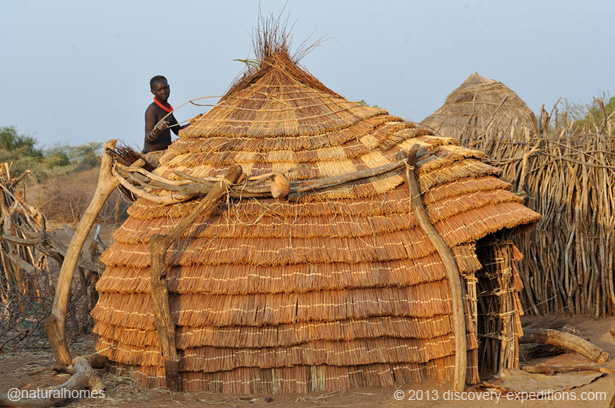 |
|
|
|
|
|
|
|
|
|
|
|
|
These are the vaulted adobe homes of the 15th century Ksar Ouled
Debbab, southwest of the city of Tataouine, Tunisia. The homes
were built alongside similar, but usually taller, granaries. The
whole complex is a fortified settlement with only one entrance.
The granaries kept food cool and dry behind the thick adobe walls
and palm wood doors. The homes are similarly cool.
|
|
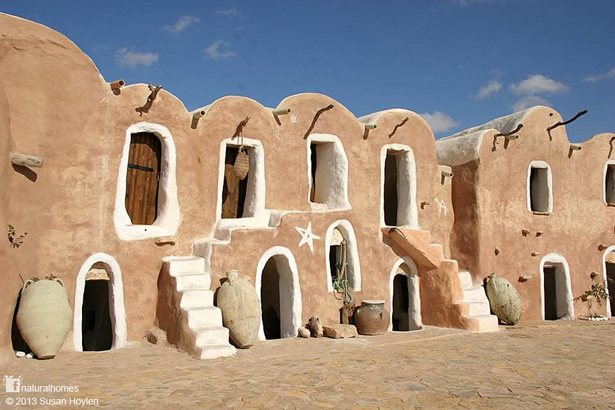 |
|
|
|
|
|
|
|
|
|
|
|
|
The Basotho hut is slowly, but surely, being nudged out of the
Lesotho landscape in South Africa by modern construction. With a
roof of strong grass that lasts 20 to 30 years it keeps the inside
cool during summer and traps heat during winter without a drop of
water seeping through. This house is part of the Basotho Cultural
Village where homes from the sixteenth century are displayed. |
|
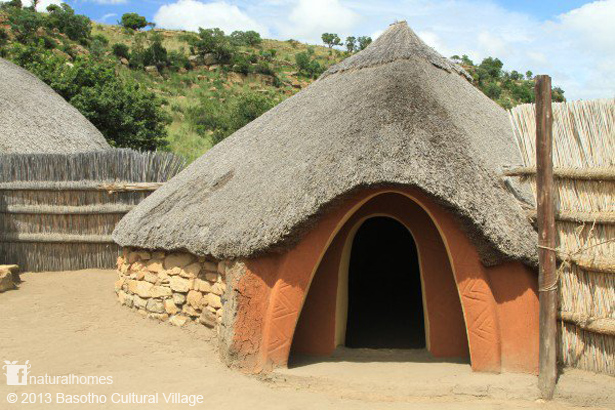 |
|
|
|
|
|
|
|
|
|
|
|
|
|
Cameroon |
|
|
These are clay Obos of the Musgum people in Pouss, Cameroon.
They are designed in much the same way as the Turkish beehive
homes in Harran, to provide efficient cooling in the
baking heat. Both are designed with vents at the top of the
building and small entrances with few, if any, windows. The
high domes collect the hot air, moving it away from people
sleeping at the bottom of the house keeping the interior around
75F (24C).
|
|
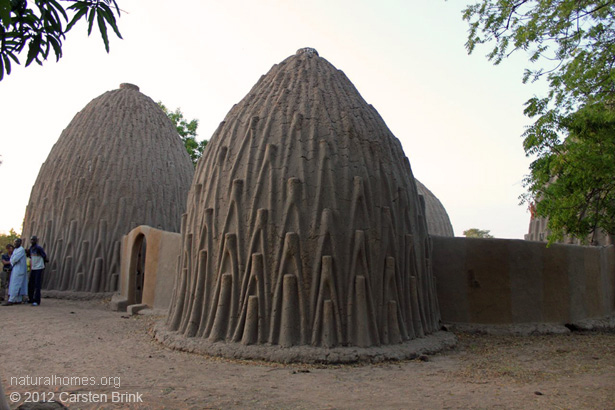 |
|
|
|
|
|
|
|
|
|
|
|
|
|
Mali |
|
|
These are Dogon
thatched clay granaries (store rooms) and homes in Songho, Mali. There
are two types of Dogon granary, male and female. The larger male
granaries are used for storing grains. Men
distribute the grain, usually millet, for the day's cooking. The female granary
is used for storing other foods but also personal things like
jewellery, clothing and pottery.
Each granary is built from clay supported on rocks. The
structures are raised off the ground to keep termites and rodents
out. The roof is solid clay with a cap of straw thatch to keep the
rain from washing away the clay. |
|
|
|
|
|
|
|
|
|
|
|
|
|
|
This is a traditional split bamboo plaited roundhouse by the
Sidama people of Ethiopia. The dome, with its pointy top, is
designed to shed heavy rainfall where a circular dome would have a
flat region prone to leaks. Bamboo once played an important role
in the rural economies of East Africa but indiscriminate clearing
of natural bamboo forests have resulted in losing natural
resources and many of the traditional building skills.
|
|
 |
|
|
|
|
|
|
|
|
|
|
|
|
These are the homes of the Batammariba (meaning "those who model
the earth") people, whose impressive
earth tower homes, called takienta, have become a symbol of Togo.
Many of the buildings are two storeys high. Some of the buildings have flat roofs, others have conical
thatched roofs. They are grouped in villages, which also include
ceremonial spaces, springs, rocks and sites reserved for
initiation ceremonies. UNESCO's video right gives more detail
about
these earthen homes. |
|
|
|
|
|
|
|
|
|
|
|
|
|
|
This is an Igherm, a communal fortified
granary, high in the Atlas Mountains in the Zawiya Ahansal region
of Morocco. This one, some 400 years old, had fallen in to
disrepair like many others in the region. It's made from stone and
adobe brick and was restored in 2007 by local builders. The Ighirmin, with ornate iron and
wooden doors, are communally owned by the tribe providing every
family in the village with a room to store grain. |
|
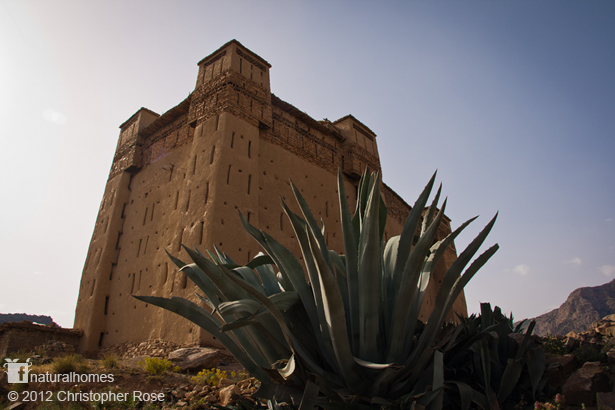 |
|
|
|
|
|
|
|
|
|
|
|
|
These are the earthen homes of the Gurunsi in Burkina
Faso. The
men build the house and the women decorate the
facades. All the figures have a symbolic meaning.
Round small houses 'dra' belong to young singles. The rectangular
'mangolo' with terrace belonging to young couples. The 'bilobées'
belonging to the older women and young children. The
water used to clean
shea butter, which ends up with an oily texture, helps to make
the plaster water-proof.
|
|
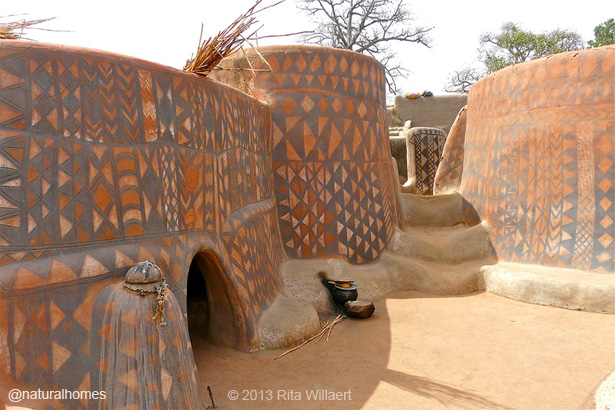 |
|